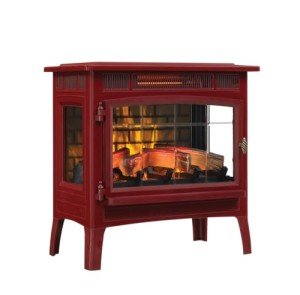
Fireplaces Deals
Add a review FollowOverview
-
Founded Date December 15, 1936
-
Sectors Technology
-
Viewed 58
Company Description
See What Fireplaces And Stoves Tricks The Celebs Are Using

The Comprehensive Guide to Fireplaces and Stoves
Fireplaces and stoves have actually been important to human civilization for centuries, working as a source of warmth, light, and convenience. These appliances are available in numerous types and have evolved for many years, accommodating diverse choices and technological developments. This short article offers a useful summary of fireplaces and stoves, highlighting their types, advantages, maintenance ideas, and installation considerations.
Kinds of Fireplaces
The world of fireplaces is rich and varied. Here are the most typical types:
-
Wood-Burning Fireplaces:
- Traditional and charming.
- Requires experienced wood and routine maintenance.
- Produces a pleasant fragrance and crackling noise.
-
Gas Fireplaces:
- Offer benefit and ease of use.
- Offered in vented and vent-free options.
- More efficient and cleaner than wood-burning choices.
-
Electric Fireplaces:
- Provide atmosphere without the need for a chimney.
- Easy to use with remote control alternatives.
- Can be utilized as a supplemental heat source.
-
Pellet Stoves:
- Use compressed wood pellets as fuel.
- Highly efficient and ecologically friendly.
- Frequently geared up with thermostats for temperature level control.
-
Ethanol Fireplaces:
- Utilize bioethanol fuel, making them portable.
- Do not require venting, which permits versatile placement.
- Produce a sensible flame with very little smoke.
-
Outdoor Fireplaces:
- Designed for outdoor settings; can be wood or gas-burning.
- Great for entertaining and enhancing backyard aesthetic appeals.
- Often built from stone, brick, or metal.
Benefits of Fireplaces and Stoves
Including a fireplace or range into a home offers various advantages:
- Aesthetic Appeal: Fireplaces work as striking centerpieces in any space, adding heat and character to home design.
- Increased Property Value: Homes with functional fireplaces tend to have higher resale worths.
- Energy Efficiency: Modern fireplaces and stoves are developed to be more energy-efficient, which can lead to decreased heating costs.
- Backup Heating Source: In case of power failures, wood-burning and gas fireplaces can function as important heating sources.
- Versatile Heating Solutions: Different kinds of fireplaces deal with different heating requirements and way of lives, from cozy atmosphere to efficient heating.
| Kind of Fireplace/Stove | Fuel Source | Efficiency Rating | Upkeep Level |
|---|---|---|---|
| Wood-Burning | Wood | Moderate | High |
| Gas | Natural gas/LP | High | Low |
| Electric | Electrical energy | High | Really Low |
| Pellet | Wood pellets | High | Moderate |
| Ethanol | Bioethanol | Moderate | Low |
| Outdoor | Wood or gas | Moderate | Differs |
Upkeep Tips
Proper upkeep extends the life of fireplaces and stoves, ensuring safety and efficiency. Here are some important pointers:
-
Regular Cleaning:
- Wood-burning fireplaces should be cleaned up after a full season of use to get rid of soot and creosote.
- Gas fireplaces require periodic examination of the burner and vents.
-
Routine Inspections:
- Have chimney sweeper perform yearly examinations to recognize clogs or structural damage.
- Check the seals and gaskets on gas units to avoid leaks.
-
Fire Safety:
- Install smoke and carbon monoxide detectors in homes with fireplaces or stoves.
- Keep a fire extinguisher near the fireplace or stove for emergencies.
-
Use Quality Fuel:
- For wood-burning units, constantly utilize experienced wood; prevent treated or painted wood.
- When utilizing pellets, guarantee they are saved correctly to avoid wetness absorption.
-
Manage Airflow:
- Keep vents and ducts clear to promote reliable ventilation and air flow.
- Think about using glass doors or screens to decrease particles and ash in the home.
Installation Considerations
Installing a fireplace or range requires mindful factor to consider of numerous aspects:
-
Location:
- Choose a place that permits appropriate clearance and ventilation.
- Think about the layout of your home and the benefit of natural heat distribution.
-
Structure Codes and Permits:
- Check regional guidelines regarding setups and required permits.
- Engage a professional to guarantee compliance with safety requirements.
-
Fuel Type:
- Evaluate your fuel alternatives based upon schedule, cost, and environmental impact.
- If going with gas, guarantee existing gas lines can accommodate the brand-new appliance.
-
Ventilation:
- Proper venting is essential for safety and efficiency, particularly for gas and wood-burning units.
- Speak with a professional to determine the very best venting service.
-
Aesthetic Consideration:
- Select a design that complements your home’s interior.
- Think about mantels, surround products, and colors that match your design.
FAQs
What is the best kind of fireplace for heating?
Gas fireplaces are generally more efficient for heating, while wood-burning fireplaces offer more ambient heat.
How frequently should I clean my fireplace?
Wood-burning fireplaces ought to be cleaned a minimum of when a year, while gas fireplaces require less frequent attention depending on usage.
Can I install a fireplace myself?
While some property owners may attempt DIY installation, it is suggested to hire an expert to make sure security and compliance with building codes.
Are electric fireplaces efficient?
Yes, electric fireplaces are extremely efficient and can act as reliable additional heating sources, specifically in smaller areas.
What is the lifespan of a fireplace?
The life-span of a fireplace varies depending upon the product, type, and upkeep; however, a well-kept wood-burning fireplace can last over 30 years.
Fireplaces and stoves remain timeless functions in homes, using warmth and ambiance. Comprehending the various types, benefits, and maintenance requirements can help homeowners make notified choices about setup and care. With cautious preparation and regular maintenance, these devices can boost both the convenience and value of a home for several years to come.
